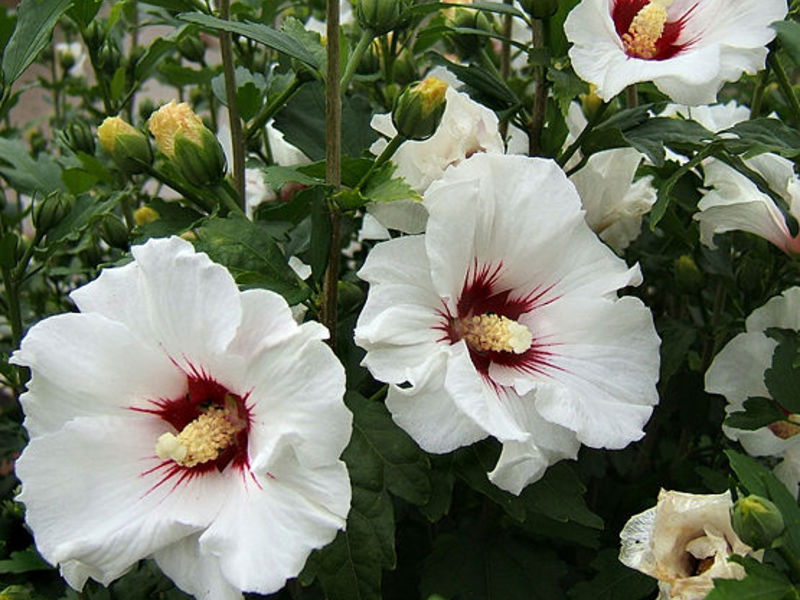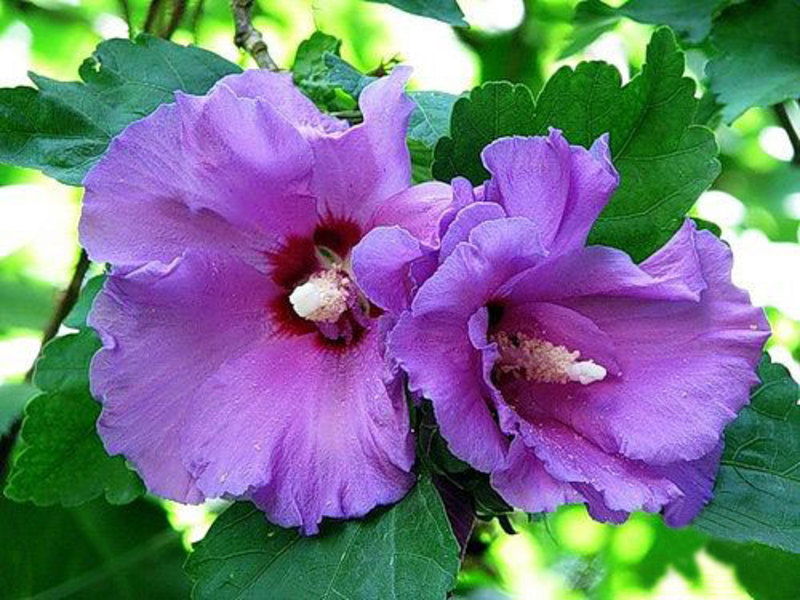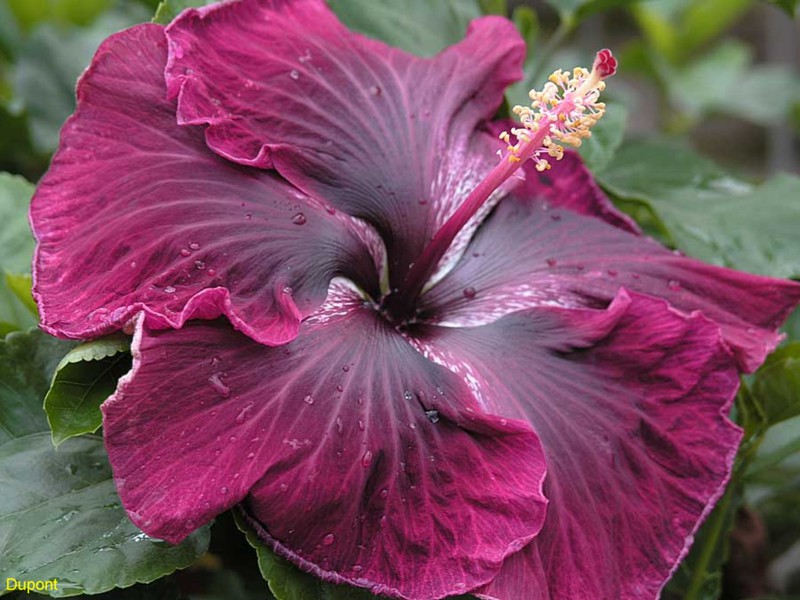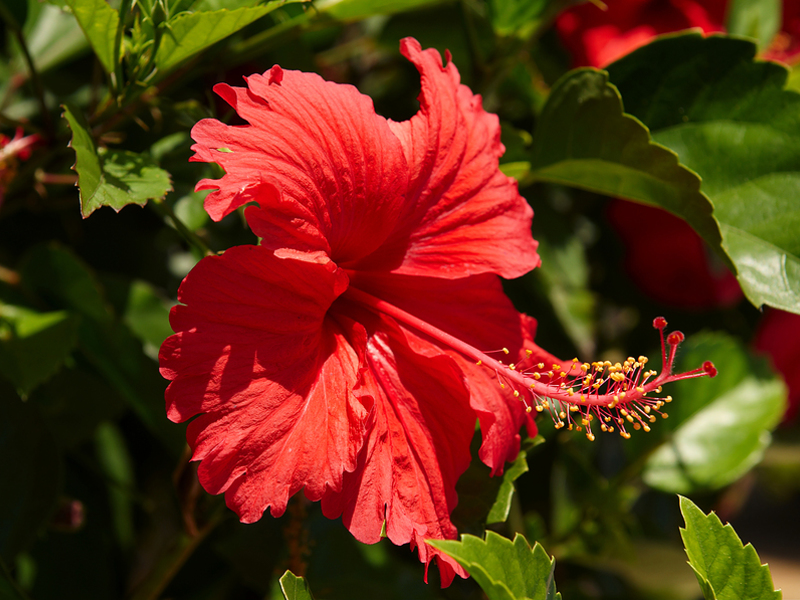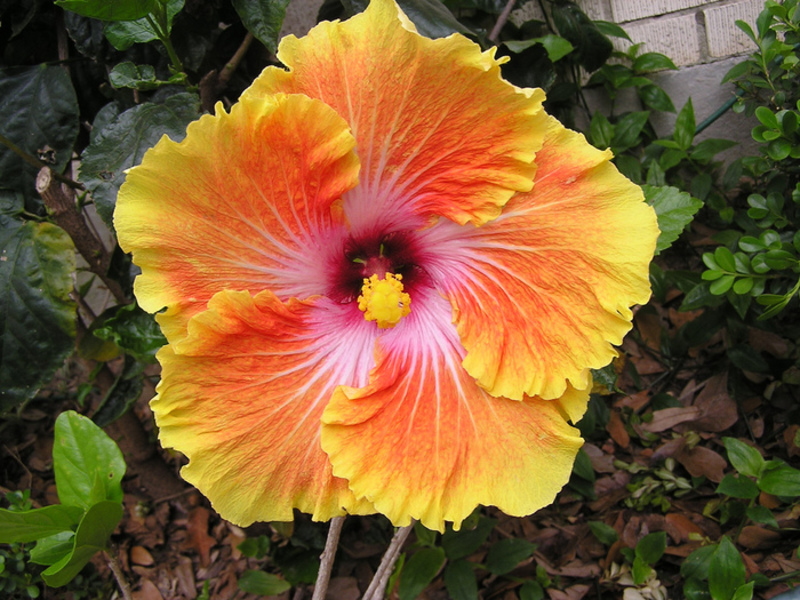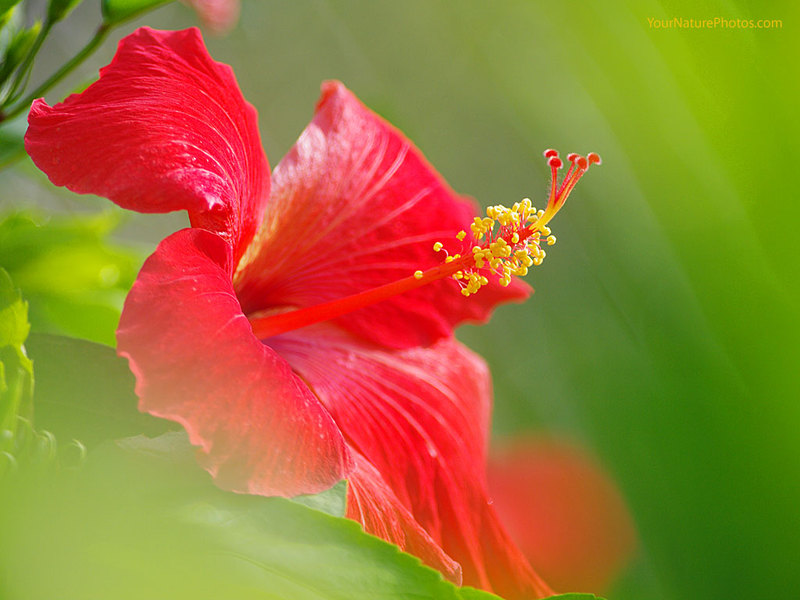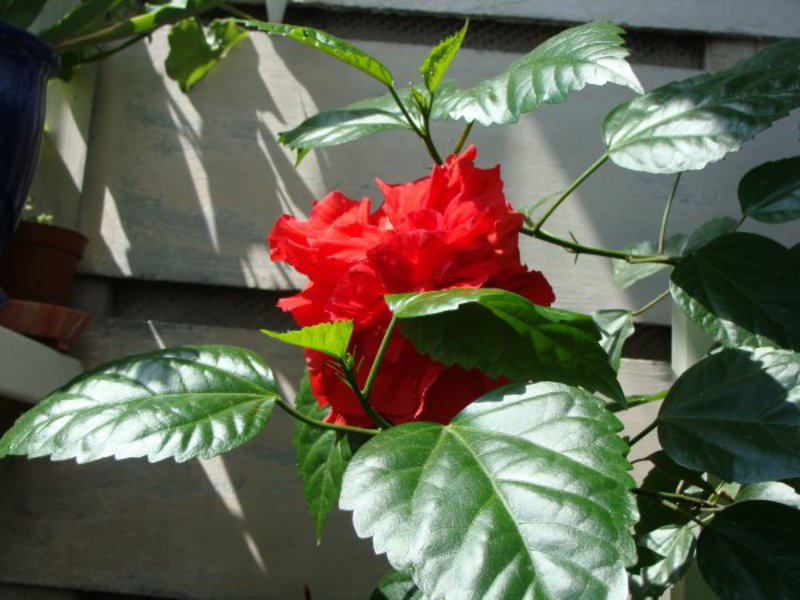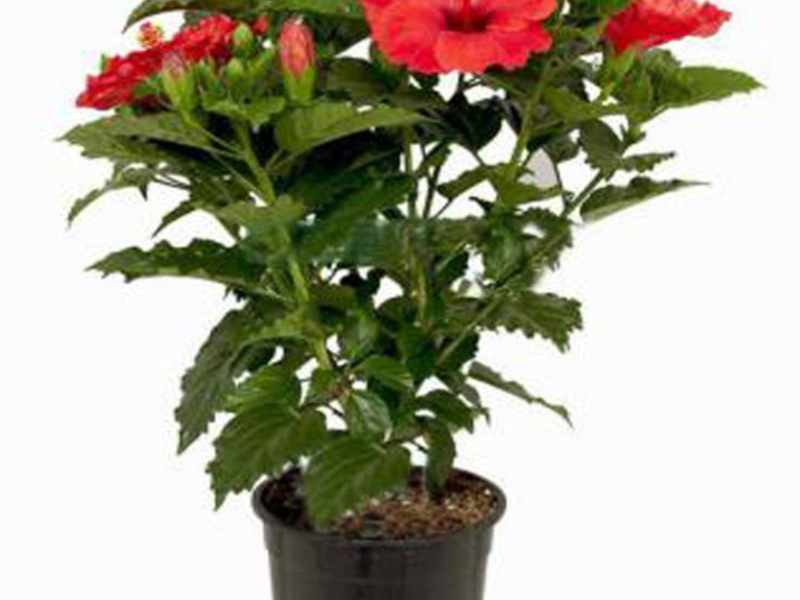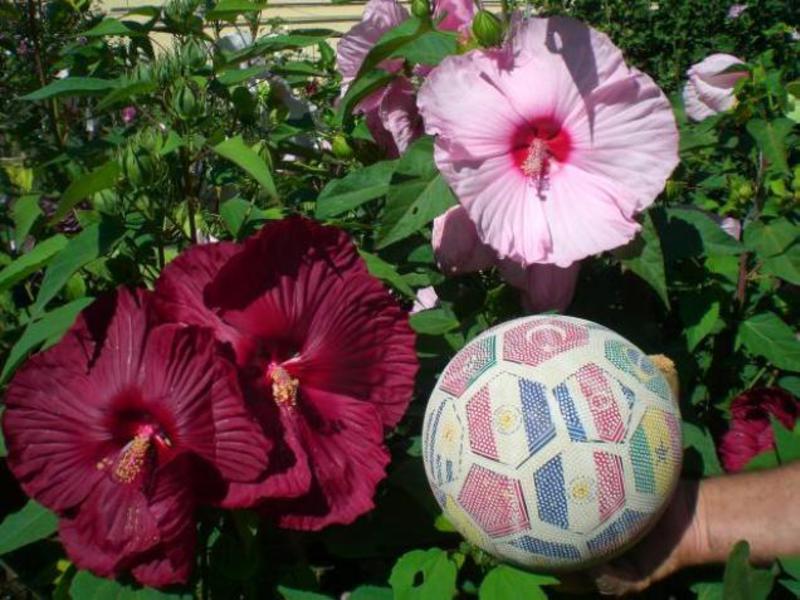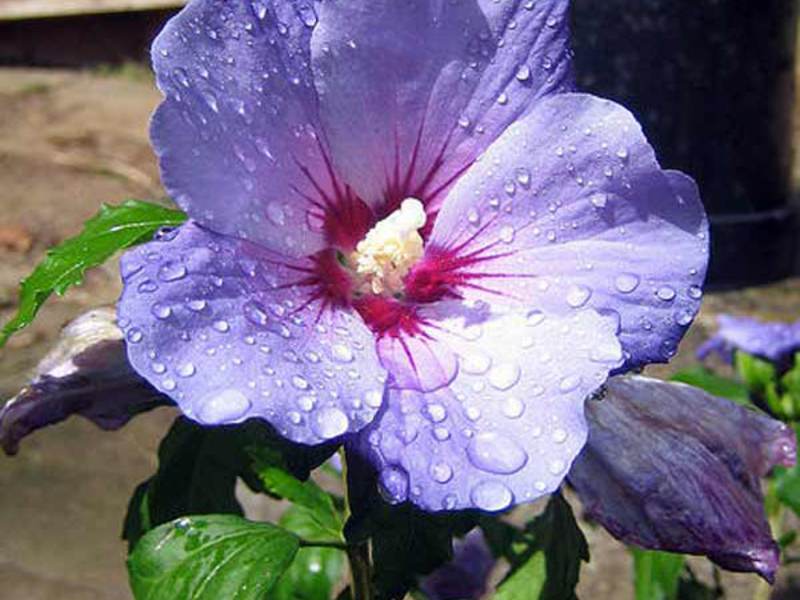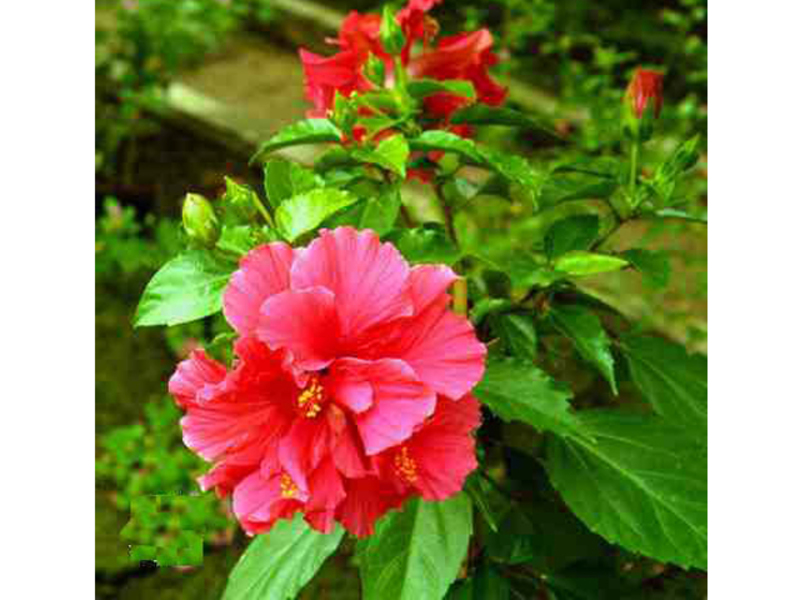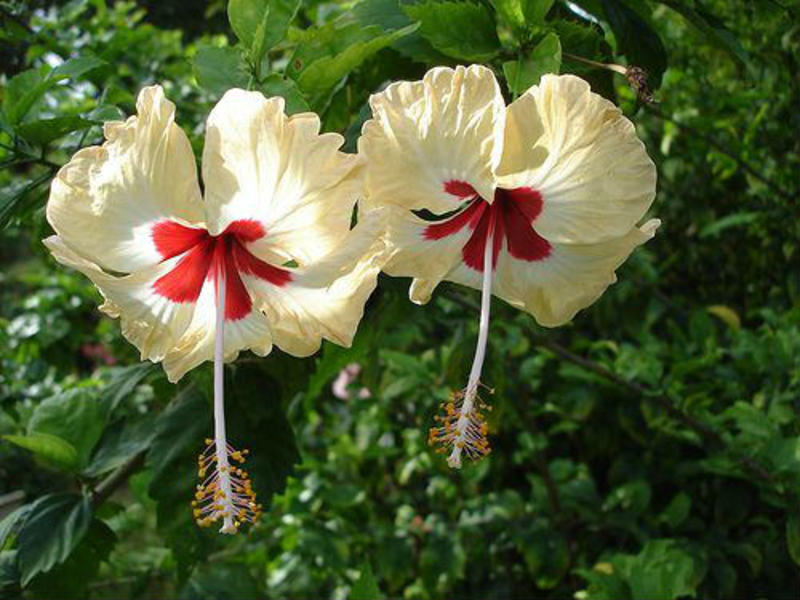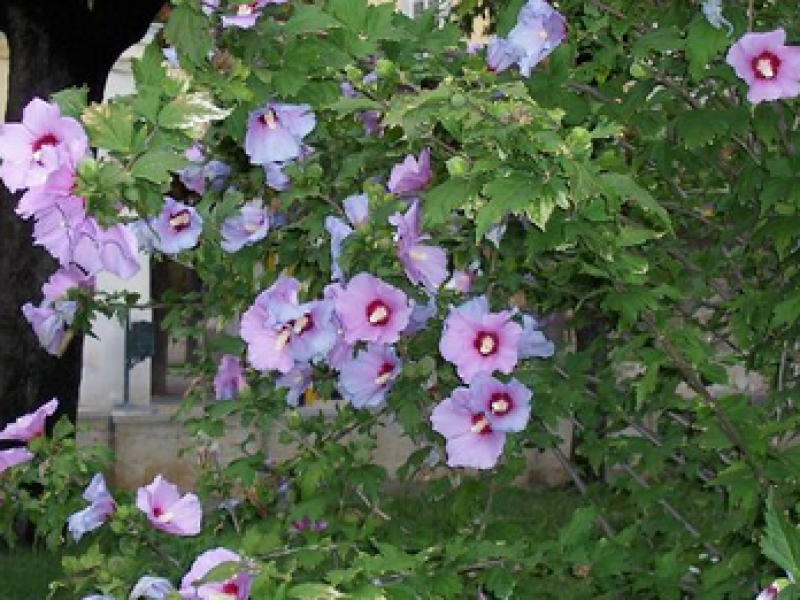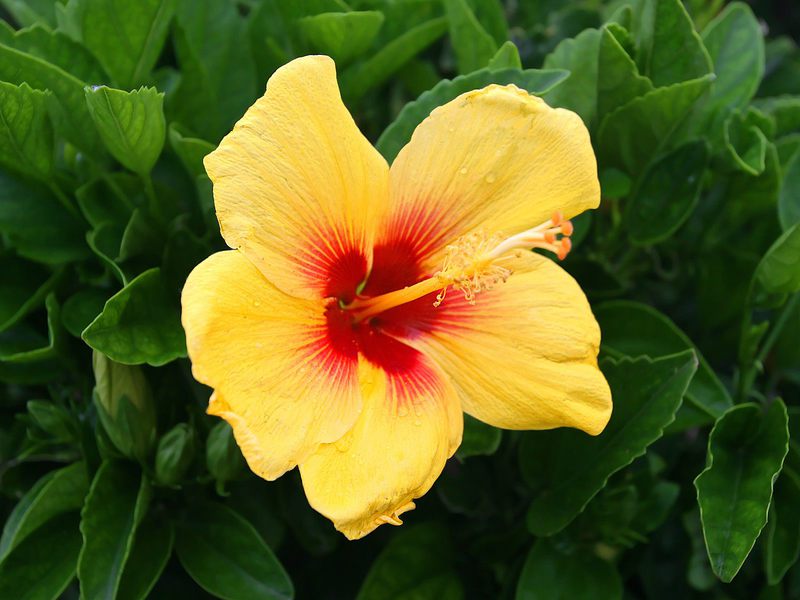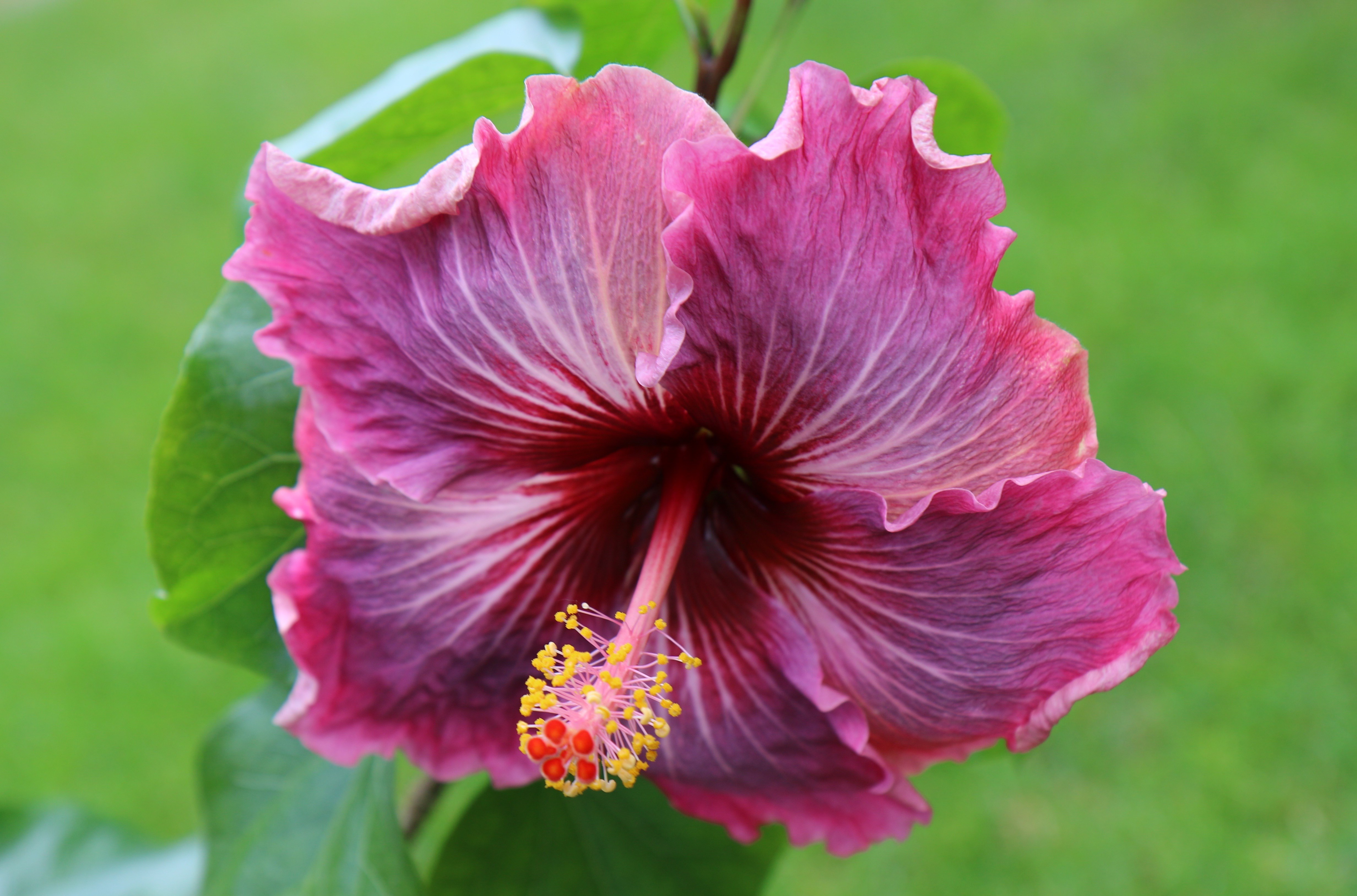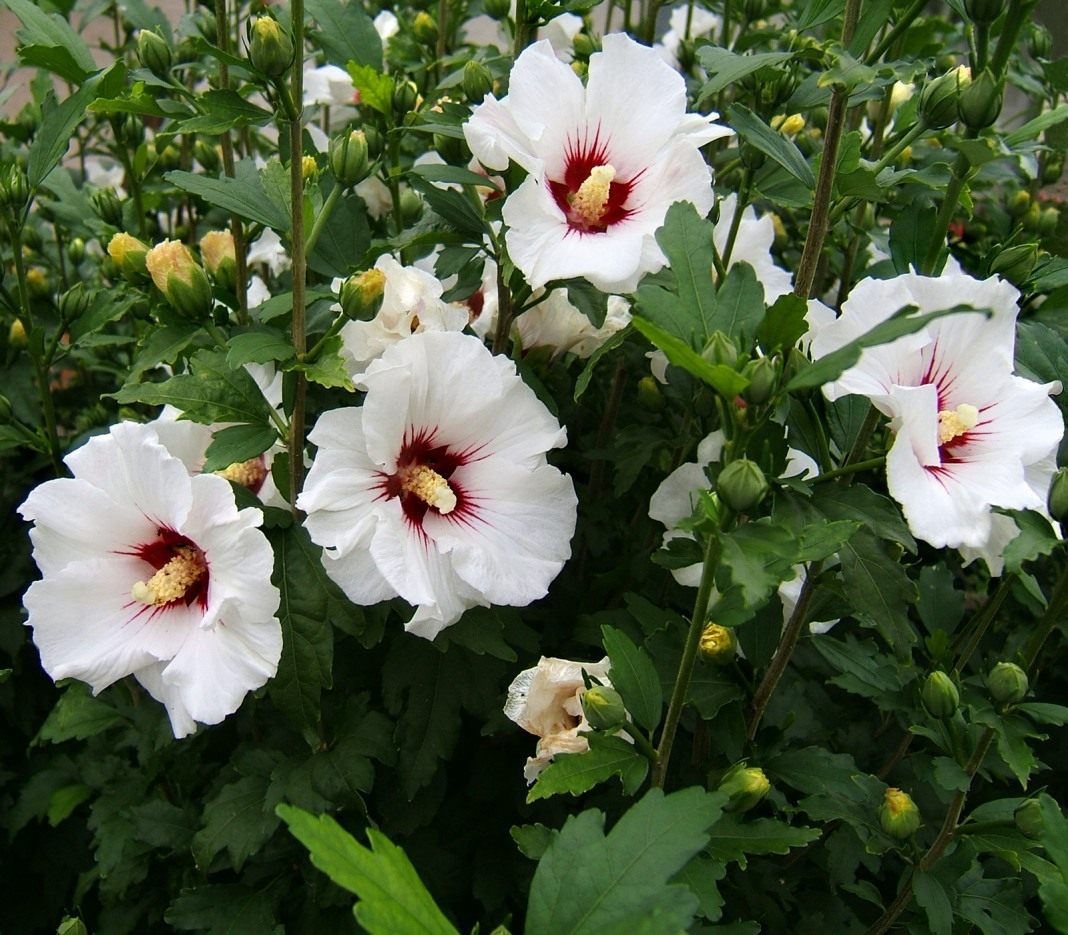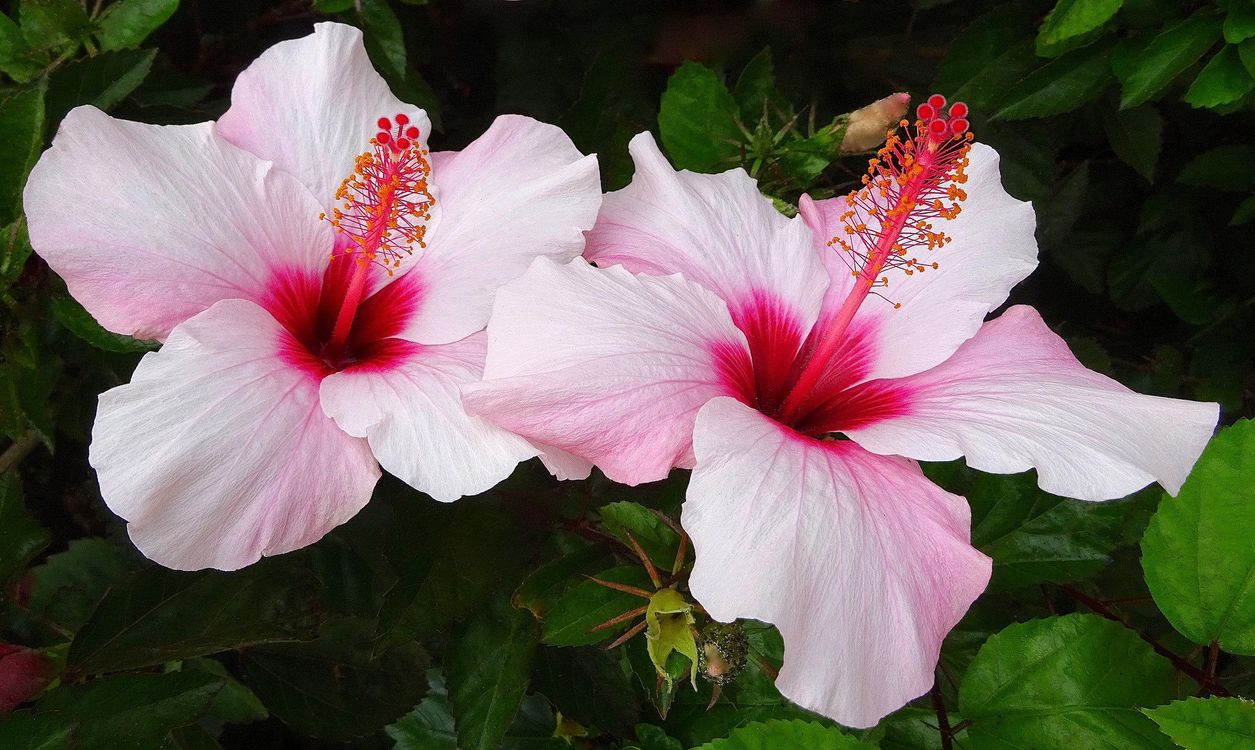Hibiscus is a class of plants from the Malvov family. As a rule, these are cultivated wild trees and shrubs, but herbaceous delicate flowers can also be found. In cold climatic conditions, it grows with difficulty, therefore, hibiscus is most often grown as indoor flowers, and in summer they are taken out to the veranda or loggia. In mild climates, these flowers can also be found on open ground.
The homeland of hibiscus is tropical China and Asia. It can also be found in Africa, USA, Australia. And in Hawaii, it is the national flower.
Content
Hibiscus flowers: photo and description
As a rule, hibiscus are deciduous, evergreen small trees or bushes 2.5-3.5 m in size. The stem of this plant is bare, the leaves are on the petioles. Large beautiful brightly colored inflorescences about 6-32 cm in size. The range of hibiscus flowers is quite diverse. Fruits are small bolls that split into 5 leaves. Inside them are fuzzy or fibrous seeds, but in some species the seeds may be completely naked.
Hibiscus has a lifespan of approximately 22 years. If you organize proper care for the hibiscus and make all the conditions for it, then the plant can grow up to 3 m.Today there are garden and indoor hibiscus flowers, in total, numbering about 300 varieties.
Arboreal hibiscus
Most flower growers fell in love with this type of plant for its large (about 11 cm) colorful flowers and use them successfully as a living fencewhile decorating their personal plots. Good watering and fertile soil are most important for a hibiscus. The double leaf is egg-shaped and the splendor of the exotic flowers will give the plant excellent germination.
Swamp hibiscus
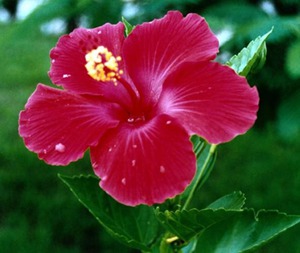 A plant with large, bright flowers, decorated with carmine spots around the corolla. With proper care, it blooms all year round. Summer residents love to plant this plant as a hedge.
A plant with large, bright flowers, decorated with carmine spots around the corolla. With proper care, it blooms all year round. Summer residents love to plant this plant as a hedge.
Home hibiscus in care is absolutely unpretentious, their flowers are used for both decorative and medicinal purposes.
The most popular in home gardening is hibiscus chinese... It has large oval leaves with a serrated edging. Hibiscus blooms for quite a long time: from early spring to late autumn. Large bright flowers last no more than days. The color, as a rule, is bright red, but in stores you can find a variety of varieties of terry and simple colors of white, blue, purple tones.
The hibiscus is cosmatogenic. This herbaceous variety of hibiscus grows only in the south. The leaves of the plant are similar to a sunflower. Large flowers with red blotches on the pharynx, do not fully open and bloom for one day.
Terry hibiscus... The plant has large white flowers about 14 cm in size and bloom one day. This evergreen flower with bright green leaves looks pretty and impressive. Loves good watering and bright light.
Triplet hibiscus. It is an annual plant that is grown using seedlings.It differs in that its creamy flowers open at 7 am and close at 8 pm.
Hibiscus mutable... It differs in that its beautiful flowers are similar to rose petals and during flowering change color from white to raspberry, at the end of flowering. It can be up to 4.5 m high.
Okra is also grown from seeds. It is an annual flower that can grow up to 3 m in height. Large yellow or purple flowers are found in the axils and, when blooming, create berries that taste like eggplant or asparagus.
Growing hibiscus
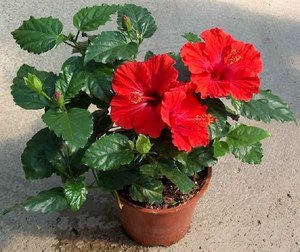 It is a fairly hardy plant and is not very demanding to grow at home. It grows very quickly. With proper care, it blooms profusely, it happens that it blooms even in winter. The most important thing that hibiscus needs is bright lighting, constant watering and spraying of flowers.
It is a fairly hardy plant and is not very demanding to grow at home. It grows very quickly. With proper care, it blooms profusely, it happens that it blooms even in winter. The most important thing that hibiscus needs is bright lighting, constant watering and spraying of flowers.
It is desirable to place it in a place protected from the wind, but well lit. Periodically requires bait: during the entire growing season, approximately once every 14 days, mineral fertilizer is added to the irrigation water. At the beginning of spring, along with the transplant, the flower is pruned, this helps the plant branching.
Lighting and watering
Hibiscus is a houseplant that must be constantly sprayed and watered. In the summertime, you can twice a day, and in spring one time is enough... In winter, as a rule, watering is reduced, and during the growing season, it is watered abundantly. The earth must always be moderately moist and loosened. Water the hibiscus preferably with soft and settled water.
The plant prefers diffused natural light. In summer, it is advisable to place it on the east or west windowsill. If the windows are located on the south side, then it is better to place the hibiscus away from the window or protect the plant from direct sunlight by covering it with a cloth. In warm weather, hibiscus can be exposed outside, but must be protected from wind and direct sunlight.
Temperature
The most suitable temperature for hibiscus during active growth is 17-24 C. By and large, this is a shade-tolerant plant, but it does not bloom in the shade so actively. In winter time do not allow the temperature to drop below 12 Cotherwise the plant will shed its leaves.
The buds of the inflorescence of the plant are laid at 13-18 degrees. At the beginning of winter, with the arrival of a dormant period, the flower is placed in a darker place, further from heating, here hibiscus is found until March. During the appearance of leaves, even before the formation of buds, the plant is rearranged to its original place.
Humidity
In this regard, hibiscus is unpretentious, but it is advisable to spray it periodically. The flowering plant is sprayed with settled water at room temperature. Spraying on hibiscus is also an excellent mite prevention.
Land for cultivation
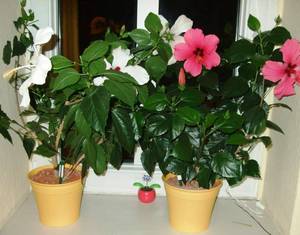 The soil for hibiscus must be breathable, thoroughly loosened, drainage must be done in the pot. As a rule, the soil contains turf, leaf, coniferous land, peat, manure, sand, a small amount of charcoal. The acidity of the earth must be neutral: pH 6.5-7.5. If the acidity of the earth is in a different range, then it is more difficult for the hibiscus to absorb nutrients.
The soil for hibiscus must be breathable, thoroughly loosened, drainage must be done in the pot. As a rule, the soil contains turf, leaf, coniferous land, peat, manure, sand, a small amount of charcoal. The acidity of the earth must be neutral: pH 6.5-7.5. If the acidity of the earth is in a different range, then it is more difficult for the hibiscus to absorb nutrients.
Fertilizers and groundbaits
Mineral and nitrogen-containing baits stimulate the long flowering of this plant, therefore they are quite useful in summer and spring. The flower is periodically fed once a month with water-soluble dressings containing copper, iron, potassium, phosphorus, manganese, nitrogen, magnesium, etc.
In the spring, it is advisable to feed with supplements with a high nitrogen content, in the summer - with phosphorus and potassium. Complex additives "Rainbow" or "Ideal" are perfect.
Transfer
Young plants need to be replanted each year in larger pots. This usually occurs in mid-spring.Transplant until the pot is about 35 cm.
An adult flower is moved in large containers every 3-4 years... If the acidity of the earth is normal, and there are no harmful insects, then the hibiscus can be left in the same container, replacing only the top layer of soil (about 6 cm) with a new one. In springtime, you can cut off 1/3 of the plant growth to form a bush. Annual pruning activates flowering.
Reproduction
This plant propagates with seeds, air vents, or cuttings. Cuttings are cut in the summer from the tops of the youngest growth. A flower that propagates by cuttings takes root perfectly after a month, either in water or in pots, which are covered with a jar. When the roots are formed, the plant is transplanted in containers about 10 cm in size. To make the flower more branched, after a certain time, pinch the crown and side branches near the cutting. Cuttings can also be grafted... This is usually done in early summer. Often, with proper care, young shoots will bloom in the first season.
The seeds are planted in the ground from the end of winter. The soil must be warmed up (24-28 gr.), And it is advisable to soak the seeds for one day before planting. When the seedling has a third leaf, the flower can be moved to the pots. Shoots begin to bloom after a few years.
Garden hibiscus
 Planting a plant on open ground is also possible, but in the southern regions, hibiscus grows without much care, but in the northern regions it needs to be taken care of.
Planting a plant on open ground is also possible, but in the southern regions, hibiscus grows without much care, but in the northern regions it needs to be taken care of.
Hibiscus yellow is suitable for outdoor cultivation, the plants begin to bloom from mid-summer to late autumn. These plants have a wide range of colors, and they lend themselves well to shaping.
In our gardens, naturally frost-resistant species are grown (for example, hybrid hibiscus). A tree to protect the roots from frost and drying out, mulch with foliage or dried grass... In winter, the plant is certainly closed. With the arrival of spring, old branches are pruned, and the shoots that have formed are pinched to create a more branched crown.
Gardening Tips
Hibiscus indoor care has some features:
- Experienced gardeners advise feeding the plant with a sugar solution (0.5 tsp sugar per mug of water).
- The flowering time of the tree can be rescheduled and the hibiscus will bloom in late fall or winter. Why it is necessary to "change" the rest time: until the end of spring, place the flower in a dark place and water it infrequently, then prune and repeat pruning in the middle of summer.
- It is better to purchase the plant in specialized stores in the spring. Pick a small flower with many buds.
- While defrosting the refrigerator, you can always find at least one spoonful of blood from the meat. Blood can also be used to feed hibiscus by mixing it with water for irrigation: the flower loves the nutrients in the blood.
Wintering
In winter, the flower needs to organize good light daily for at least 8 hours, you can install fluorescent lamps by placing them at a distance of 0.5 m from the plant... If there is little light, then the plant either blooms poorly, or does not bloom completely. In winter, bait is performed less often, but taking into account the state of the flower (about once a month with half a dose of potassium and phosphorus supplements) or when the hibiscus is in cold and practically dry conditions, the bait is completely stopped. Add groundbait after watering. The optimum temperature in winter is 15-17 degrees.
Using
Useful qualities of hibiscus:
 the plant has excellent anti-inflammatory and hemostatic qualities, is used during the treatment of weeping ulcers;
the plant has excellent anti-inflammatory and hemostatic qualities, is used during the treatment of weeping ulcers;- the flower is rich in useful elements: phytosterols, flavonoids, anthocyanins, pectins (reduce the amount of cholesterol, strengthen blood vessels).
The healing qualities of karkade:
- has an antispasmodic effect;
- normalizes blood pressure;
- fights various pathogens;
- enhances immunity, cleanses the body, protects the liver, activates the formation of bile;
- has a sedative effect;
- safe for people with kidney disease;
- tea perfectly quenches thirst;
- long-term consumption helps infertility;
- helps with a hangover;
- used as a mild laxative;
- great for losing weight.
Despite the great benefits of the flower, there are contraindications to using it:
 the flower has a strong choleretic effect, therefore it is not advisable for people with chronic diseases of the gallbladder to use it;
the flower has a strong choleretic effect, therefore it is not advisable for people with chronic diseases of the gallbladder to use it;- you need to consider the risk of allergies;
- during pregnancy, it is undesirable to abuse karkade, since the active substances of the flower activate the uterus, provoke menstruation;
- karkade is contraindicated for children under 12 months;
- with caution it is necessary to use hibiscus for ulcers (it is advisable to consult a doctor).
Proper care of the plant will provide an opportunity form a beautiful tree... By following all the tips, you can grow a gorgeous flower for a large living room or hall, and a small flowering plant will be a great holiday decoration.
